#macrofossils
Explore tagged Tumblr posts
Text
A Record-Breaking Old Bean
ESP version ITA version
Can a seed be among the largest ever recorded in the fossil record, represent the first evidence of migration between tectonic plates towards the Australian region, and also be the only known ancestor of the Moreton Bay chestnut (Castanospermum australe)?
The answer is a resounding yes.
Who are we talking about? Its name is Jantungspermum gunnellii, a leguminous plant dating back to the Eocene period, approximately 34-40 million years ago. The discovery of this plant was the result of extreme determination and, perhaps, a bit of luck. Collecting fossils in southern Borneo is a considerable challenge: most of the surface rocks are constantly eroded by heavy tropical rains, covered by dense vegetation, and in many cases, overshadowed by buildings or agricultural land. Despite these difficulties, in 2014, a team of researchers collected three large fossil seeds from the seams of a coal mine in South Kalimantan, Indonesian Borneo, the largest of which measured 7.2 cm in length, along with 43 leaves and two pollen samples. All the material was brought to the laboratory for detailed analysis.
To the great surprise of the researchers, the seeds found appear to be ancient relatives of the Castanospermum genus, of which today only one species exists worldwide. However, this lineage hides further surprises linked to tectonic movements. The collision between the tectonic plates of Southeast Asia and Australia, which began about 20 million years ago and is still ongoing, has led to a significant exchange of plant and animal species between these land masses. During the Cenozoic era, the area was affected by two major geological events: the Asia-India and Sahul-Sunda collisions. Sahul is part of the continental platform of the Australian continent and lies off the coasts of Australia, while Sunda is part of the Eurasian plate. The contact and collision between these regions allowed numerous plant lineages from Australia to migrate to Asia. This is evident from the fact that species found in the Asian fossil records are also present in the older Australian fossil records, suggesting that these plants initially evolved in Australia and later colonized Asia, providing a clear temporal signal of the migration.
But could the plants have made the reverse journey, from Asia to Australia? The rarity of plant macrofossils from Sunda has so far limited the understanding of pre-collision vegetation and the plants that migrated from Sunda to Sahul. Evidence in this regard was scarce and mainly based on palynological and molecular data. Until now. The discovery of this seed has provided the first macrofossil evidence of a plant evolutionary line that moved from Asia to Australia. Since Jantungspermum belongs to the same subfamily as Castanospermum, we can also hypothesize how the seeds may have dispersed. Today, Castanospermum disperses its seeds using floating, salt-tolerant pods that can travel for kilometers in rivers and oceans, especially after storm events. The fossil seeds of Jantungspermum were recovered from the upper Tambak Member (a member is a part of a geological formation distinguishable from the rest of the formation by its lithological characteristics) in a coastal depositional paleoenvironments, probably brackish, suggesting that their pods traveled a significant distance, similarly to its descendants, from the riparian parent plant before disintegrating and releasing their seeds.
The incredibility of this seed does not end here. These fossils also represent the oldest legume fossils in the Malay Archipelago. Moreover, the seeds are among the largest ever recorded in the fossil record, excluding coconuts and some other palms. They likely grew in a pod that reached the length of a baseball bat and could contain up to five seeds. The name Jantungspermum gunnellii derives from the Indonesian word "Jantung," which means heart, in reference to the shape of the fossil seed. "Spermum" means seed in Latin, while the specific term "gunnellii" is a tribute to the late Gregg Gunnell, a vertebrate paleontologist formerly at the Duke University Lemur Center, who led the expedition.
There are still many stories buried beneath the rock, and sometimes, a small yet big seed can reveal one of them.
source

#fossils#paleontology#botany#migration#prehistoric plants#Eocene#legumes#Australia#Asia#evolution#scientific discoveries#macrofossils#geology#tectonic plates#bean#giant bean#castanospermum
2 notes
·
View notes
Text
I have stumbled upon the horrors and they stared back at me <<<man who googled “root fragment” expecting to see plant roots and instead was greeted by teeth, or rather, the lack thereof
#jesus christ dude#it was just a hole in someones jaw#i love body horror but good god i need to bleach my eyes#im just trying to id plant macrofossils man!!!#ollie rambles
0 notes
Text

Trilobozoans (also known as triradialomorphs) are some of the more enigmatic members of the Ediacaran biota. In the past their unique three-way-symmetrical body plan was interpreted as linking them to groups like sponges, cnidarians, or echinoderms, but currently they're considered to be their own weird little phylum with uncertain evolutionary affinities, classified no more specifically than "probably some sort of early eumetazoan animal".
Lobodiscus tribrachialis is a newly-described member of this mysterious lineage. It lived in warm shallow marine waters covering what is now Southwestern China, and with an age of around 546 million years it's currently the youngest known trilobozoan, extending the group's time range by several million years.
About 3.7cm in diameter (~1.5"), it had the characteristic trilobozoan disc-shaped shield-like body, with a central depression surrounded by three triradially-symmetric lobes with branching ridges and grooves.
Its body would have been soft but fairly rigid, and it's not clear if it was capable of moving over the seafloor or if it had a more static lifestyle. Like its relative Tribrachidium it was probably a filter feeder, with the grooves on its surface directing water flow towards the central depression – and this surface ornamentation may also have been covered with cilia that actively caught and transported suspended food particles.
———
NixIllustration.com | Tumblr | Patreon
References:
Ivantsov, A. Yu, and M. A. Zakrevskaya. "Trilobozoa, Precambrian tri-radial organisms." Paleontological Journal 55 (2021): 727-741. https://doi.org/10.1134/S0031030121070066
Ivantsov, Andrey, Aleksey Nagovitsyn, and Maria Zakrevskaya. "Traces of locomotion of Ediacaran macroorganisms." Geosciences 9.9 (2019): 395. https://doi.org/10.3390/geosciences9090395
Hall, C. M. S., et al. "The short-lived but successful tri-radial body plan: a view from the Ediacaran of Australia." Australian Journal of Earth Sciences 67.6 (2020): 885-895. https://doi.org/10.1080/08120099.2018.1472666
Rahman, Imran A., et al. "Suspension feeding in the enigmatic Ediacaran organism Tribrachidium demonstrates complexity of Neoproterozoic ecosystems." Science Advances 1.10 (2015): e1500800. https://doi.org/10.1126/sciadv.1500800
Zhao, Mingsheng, et al. "A putative triradial macrofossil from the Ediacaran Jiangchuan Biota." Iscience 27.2 (2024). https://doi.org/10.1016/j.isci.2024.108823
Wikipedia contributors. “Lobodiscus.” Wikipedia, 29 Mar. 2024, https://en.wikipedia.org/wiki/Lobodiscus
Wikipedia contributors. “Trilobozoa.” Wikipedia, 10 Mar. 2024, https://en.wikipedia.org/wiki/Trilobozoa
#science illustration#paleontology#paleoart#palaeoblr#lobodiscus#trilobozoa#triradialomorpha#eumetazoa#animal#ediacaran#art#or maybe just precambrian disc golf
325 notes
·
View notes
Text
The Science of Discovering the Past: Paleoethnobotany

Source: https://pixahive.com/photo/different-types-of-green-plants-grown-in-front-garden/
Plants have been important to hominids from the very first of our line. Understanding that connection is the milieu of paleoethnobotany or archaeobotany. Paleoethnobotany is the preferred term in North America, acknowledging the the 'contribution that ethnographic studies have made towards our current understanding of ancient plant exploitation practices' and archaeobotany is preferred in Europe as it 'emphasizes the discipline's role within archaeology'.

By Cmhenkel - Own work, CC BY-SA 4.0, https://commons.wikimedia.org/w/index.php?curid=104404554
As a field, paleoethnobotany is about 200 years old. In the early 19th century, the chance discovery of desiccated or waterlogged materials were the first macrofossiles that were researched by botanist C. Knuth in 1826 in Egypt and O Heer in Switzerland (respectively). Interest in plants in the North America didn't pick up until the 1930s when M.R. Gilmore and V.H. Jones studied dessicated remains in the American Southwest. These studies focused cataloging and simple identification of plants found in archaeological sites.
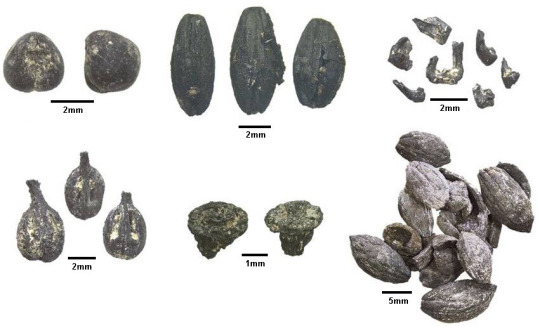
By Cmhenkel - Own work, CC BY-SA 4.0, https://commons.wikimedia.org/w/index.php?curid=104397525
During the 1950s and 1960s, researchers pushed for paleoethnobotany to be recognized as a subfield of archaeology. There were two main catalysts for this effort, the recovery of plant materials in the Near East and the publication of the report of excavations of Star Carr, a Mesolithic site about 8km from Scarborough in North Yorkshire. Together, these convinced the archaeological community that studying plant remains were important to the discipline.

By Cmhenkel - Own work, CC BY-SA 4.0, https://commons.wikimedia.org/w/index.php?curid=104394010
In the 1970s, the idea that archaeology was also anthropology, or Processul archaeology, caused a rise in the field of paleoethnobotany. New recovery methods, such as the flotation method, where water is used to separate the carbonized plant remains from sediment and a sieve is used to recover the fossilized plant remains. In the 1990s, Post-Processual archaeology or interpretative archaeology broadened the field to include topics such as 'food-related gender roles'.

By Cmhenkel - Own work, CC BY-SA 4.0, https://commons.wikimedia.org/w/index.php?curid=104396223
More recently, techniques have improved in collecting and analyzing remains as well as the ability to find microfossils, allowing researcher to develop a fuller picture of how early hominids used plants. This also allows researchers to understand how intense agricultural labor was, how resilient settlements and hunter-gatherer groups were, and how these changed and influenced with long-term social and economic changes.
8 notes
·
View notes
Text
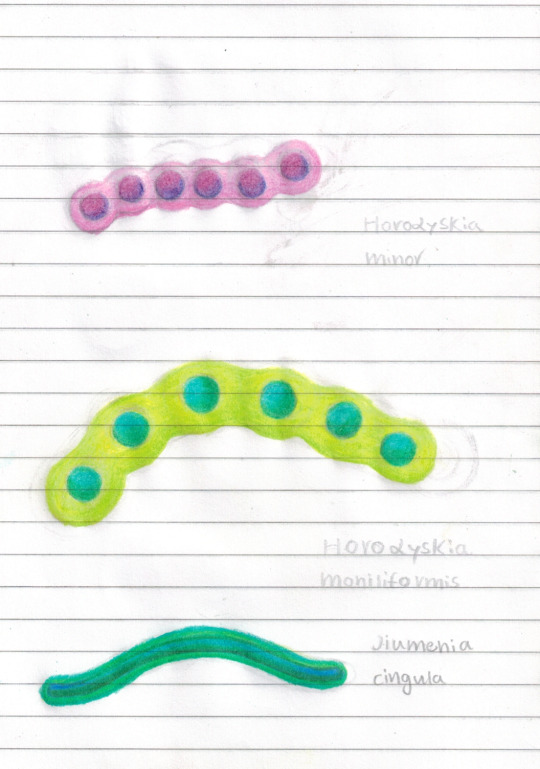
Hearing people rave about the Ediacaran biota and how mysterious and ancient they are feels kinda odd to me now as someone who is now *VERY* aware of all the weird stuff that existed hundreds of millions to billions of years before that. Don't get me wrong, the Ediacaran biota are great, but there's just so much interesting stuff from before them that hardly gets covered, like the organisms pictured above (except for the bottom one, which is purely Ediacaran), which, speaking of which, I should probably explain.
The top two organisms pictured above are both members of the genus Horodyskia, the string of beads. The top one is the smaller Horodyskia minor, which, if my memory serves correct, has been found from the Ediacaran to the Tonian, sometime prior to 720 million years ago. The middle one is Horodyskia moniliformis, a larger species that I believe spans from the Tonian to at least the Calymmian, specifically sometime around 1480 million years ago (1.48 billion years ago). Both are rather small, with the beads of H. minor typically measuring around 0.1 to 0.8 mm and the beads of H. moniliformis typically measuring around 0.8 to 10 mm. They are reconstructed inside of a gelatinous halo based on well preserved specimens from the Ediacaran and Tonian.
Oh and Jiumenia is a weird thing from the late Ediacaran that also has a halo.
Here are some papers on the subject*:
*unfortunately, the second one requires you to log in via an organisation.
#precambrian#proterozoic#mesoproterozoic#tonian#calymmian#ediacaran#paleoart#paleontology#Horodyskia
3 notes
·
View notes
Photo

Nummulitic Limestone Fossil – Eocene Foraminifera, Clues de Barles France, Authentic Specimen
An exceptional piece of Nummulitic Limestone containing abundant fossil foraminifera from the Eocene Epoch (~40–50 million years ago). This specimen originates from the fossil-rich locality of Clues de Barles in the Haute-Provence region of southeastern France.
The dominant fossils in this rock are Nummulites, large, disc-shaped benthic foraminifera that thrived in warm, shallow marine environments. These organisms were important contributors to carbonate sedimentation in the Eocene and played a significant role in reef and platform development.
Fossil Type: Foraminifera (Marine Microfossils)
Primary Genus: Nummulites
Geological Age: Eocene – Lutetian to Bartonian Stages
Formation: Nummulitic Limestone Beds (Alpine foreland basin sediments)
Depositional Environment: Formed in warm, shallow marine carbonate platform settings. Rich in calcareous micro- and macrofossils, this environment supported diverse benthic communities and accumulated thick deposits of bioclastic limestone.
Morphological Features:
Disc-like, coin-shaped foraminiferal tests (shells)
Radial and concentric internal chamber structure
Dense fossil concentration in fine-grained matrix
Notable:
Classic and scientifically significant fossiliferous limestone
Sourced from a world-famous geological and fossil site in southern France
Excellent educational, display, or geological reference piece
The exact specimen photographed is the one you will receive
Authenticity: All of our fossils are 100% genuine natural specimens and come with a Certificate of Authenticity. Please refer to the photo and scale cube (1cm squares) for accurate sizing.
This slab of Nummulitic Limestone from Clues de Barles offers a stunning glimpse into Eocene marine life and the geological processes of carbonate formation. A classic fossil collectible with both scientific and visual appeal.
#Nummulites fossil#foraminifera limestone#Eocene fossil France#Clues de Barles fossil#fossil limestone#nummulitic rock#fossil marine microfauna#French fossil stone#foraminiferal fossil#fossil collector slab#fossil limestone France#authentic fossil specimen
0 notes
Text
Wk 16, 9th of May, 2024 Research
Findspot
findspot: the place where an archaeological object has been found or a place where an object is found.
From the text: A multi-proxy palaeoenvironmental investigation of the findspot of an Iron Age bog body from Oldcroghan, Co. Offaly, Ireland by Gill Plunkett...
In 2003, the remains of an Early Iron Age bog body, known as ‘Oldcroghan Man’, were recovered during the cutting of a drainage ditch in a bog in the Irish Midlands. Only some fingernails and a withe fragment remained undisturbed in situ in the drain face, providing the sole evidence for the original position of the body. A detailed reconstruction of the depositional context of the body has been undertaken through multi-proxy analyses of a peat monolith collected at the findspot. The palynological record shows that the surrounding area was the focus of intensive human activity during the Later Bronze Age, but was largely abandoned during the Bronze Age–Iron transition in the mid-first millennium BC. In the mid-4th century BC, a bog pool developed at the site, evidenced in the stratigraphic, plant macrofossil, testate amoebae and coleopteran records. Plant macrofossil and pollen analysis of peat samples associated with the fingernails suggests that the body was deposited in this pool most likely during the 3rd century BC. The absence of carrion beetle fauna points to complete submergence of the body within the pool. Deposition occurred shortly before or around the time that the surrounding area again became the focus of woodland clearance, as seen in the extended pollen record from the peat monolith. This period corresponds to the Early Iron Age in Ireland, during which renewed cultural connections with Britain and continental Europe can be seen in the archaeological record and widespread forest clearance is recorded in pollen records from across Ireland. The palaeoenvironmental results indicate, therefore, that the demise of Oldcroghan Man took place at a pivotal time of socio-economic and perhaps political change.
This paper describes the results of a multi-proxy palaeoenvironmental study conducted on a peat monolith collected from a section adjacent to the findspot of Oldcroghan Man. Using pollen, plant macrofossil, testate amoebae and coleopteran analyses, we reconstruct the landscape history of the surrounding area in the centuries bracketing the burial, as well as detailed local environmental conditions at the time the body was deposited in the bog.
From the text: THE FINDSPOTS OF BRONZE AGE METALWORK IN LOWLAND ENGLAND: A NEW FIELD STUDY by David Dunkin, David Yates and Richard Bradley...
This paper is concerned with the deposition of Middle and Late Bronze Age metalwork in three study areas extending from the coast of south-east England to the edge of the Fenland. It considers where hoards and single finds have been discovered and is based on inspection of over 300 findspots on the ground. It investigates regions in which tools and ornaments are common, but also extends to those with a stronger representation of weapons. While rapiers, swords and spears are found in rivers, terrestrial finds often come from sites close to springs, aquifers and confluences and favour areas with fresh water rather than salt water. Others are from more prominent locations on high ground or in low-lying positions like dry valleys. We suggest that such places played a role in a tiered cosmology. Metalwork was deposited where the underworld or the sky came into contact with the landscapes inhabited in daily life.
From the text: Staying local – experiencing local landscapes and the potential of hidden stories by Steven Timoney...
This article considers some of the opportunities increased visitation to recreational areas presents in terms of engaging residents and visitors with local heritage in the form of Historic Environment Records (HERs). There are countless potential ‘hidden stories’ related to cultural heritage sites and artefacts within palimpsest landscapes. These sites and artefacts present opportunities for alternative narratives of place to be negotiated, creating links to the past in the present, and between the exotic and the familiar. The changing approach to landscape practices resulting from COVID-19 restrictions presents new opportunities to engage people with these hidden stories, linking places near with far-off lands across time and space. It also encourages new connections with place that have the potential to (co-)create new narratives; increasing engagement, as well as correlating with pressing issues centred around the climate crisis and the urgent need to reduce travel to achieve Net Zero targets.
Taking Kinnoull Hill Woodland Park on the outskirts of the Scottish city of Perth as its focus, this article considers some of the opportunities this increased visitation presents in terms of engaging residents and visitors with local heritage. Within the landscape are countless potential ‘hidden stories’ related to cultural heritage sites and artefacts as part of palimpsest landscapes. These sites and artefacts present opportunities for alternative narratives of place to be negotiated, creating links to the past in the present, and between the exotic and the familiar. Heritage is often something that people travel to experience, and previously what was local may have been undesired or unknown (Lew Citation2018). Broadly speaking, outdoor recreation spaces saw an increase in activity resulting from varied COVID-19 lockdown measures (Bustad, Clevenger, and Rick Citation2023, 90). The restrictions on movement also provided the opportunity for explorations of ‘urban green spaces and the (re)formation of perspectives and practices attached to these’ (King and Dickinson Citation2023, 112). The changing approach to landscape practices resulting from COVID-19 restrictions presents new opportunities to engage people with these hidden stories, linking places near with far-off lands across time and space. It also encourages new connections with place that have the potential to (co-)create new narratives, increasing engagement; as well as correlating with pressing issues centred around the climate crisis and the urgent need to reduce travel to achieve Net Zero targets.
Chapter: Perceptions of landscape
The concept of landscape has evolved from its origins as landschap, used to refer to an area of land (Antrop Citation2013, 12), to what Wattchow describes as ‘a classic trans-disciplinary concept’ (Citation2013, 87). It is a complex construct that need to be interpreted, a reflection that social realities are constructed rather than innate (Atha et al. Citation2013, 2). As such, landscape does not just exist. Instead, landscape has been variously conceived as both a spatial and cultural entity (Brace and Geoghegan Citation2010, 287). They are texts to be read (Duncan and Duncan Citation1988); something that favours the visual, though the conscious and subconscious actions of individuals identify what is seen and how it is understood (Antrop and Van Eetvelde Citation2017, 62). It has been considered a dualism between its material reality and ideal representation (Timms Citation2008); landscape as a verb as well as a noun (Leyshon and Geoghegan Citation2012, 240). Though the separation of the cultural and the natural is not so clear cut:
As the familiar domain of our dwelling, [landscape] is with us, not against us, but it is no less real for that. And through living in it, the landscape becomes a part of us, just as we are a part of it (Ingold Citation 2000, 191).
Bound up within discussions of landscape are ideas around place, identity, and attachment. Aspects of identity then can have a geographical component. Place-identity refers to the way people use place as an influencing factor in the construction of identities (Proshansky, Fabian, and Kaminoff Citation1983). Tuan (Citation1974) saw space given meaning through the development of identities connected to landscape – what he defined as ‘topophilia’ (a love of place), with stronger attachments to place developing over time. Massey uses the term ‘a progressive sense of place’ (Massey Citation1994) to reflect the idea that the character of places is constructed by the flows of people and ‘things’ in and out of a space. Place attachment (Altman and Low Citation1992; Devine-Wright Citation2009) creates a sense of belonging with a spatial context in the sense of being in place.
Chapter: Perceptions of heritage
The purpose or role of heritage has been widely debated. Perceived distinctions between tangible remains and ‘objective’ history, have been compared to subjective, populist accounts which have been defined as heritage (Lowenthal Citation1998). The process of heritage is a selection of elements in the present that can be attributed to or provide connection with the past (Smith Citation2006; Tunbridge and Ashworth Citation1996). It has been argued, then, that these processes have facilitated a continued separation between archaeology and heritage in terms of management and practice, enabling archaeologists to be ‘very successful in protecting what they perceive to be their database’ (Smith and Waterton Citation2009, 1).
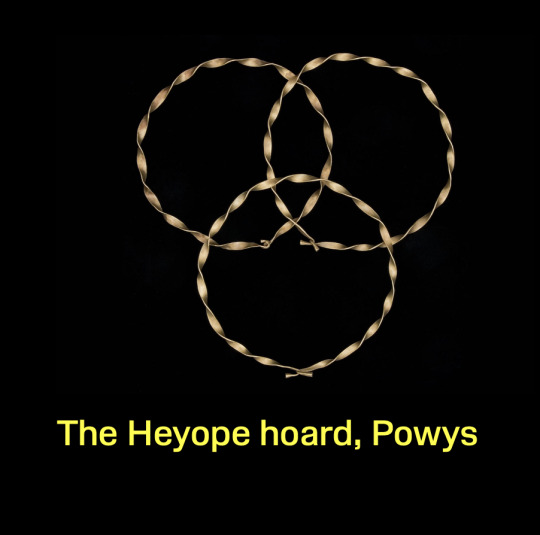
Bronze Age Gold from the Heyope hoard, The Museum of Wales online database in the archive Ancient Wales
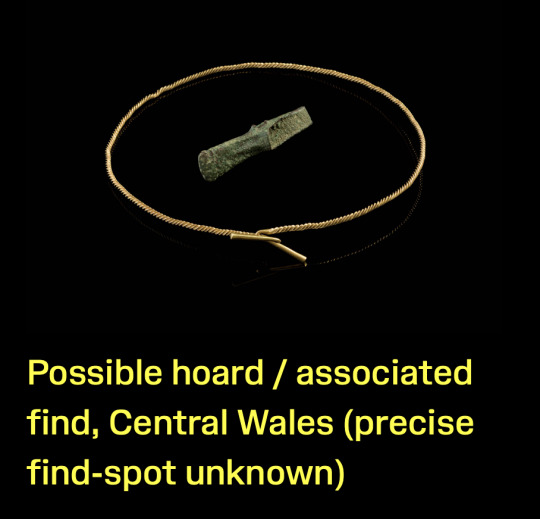
Bronze Age Gold and tarnished metal from a findspot in Central Wales, The Museum of Wales online database in the archive Ancient Wales
0 notes
Link
First macrofossil record of Calophyllum in Thailand reported – The Lifestyle Insider
0 notes
Text
Microfossils are any fossil smaller than a 1mm. They are the most common, and creatures of all kingdoms can be found as microfossils. Microfossils are incredibly important for paleoenvironmental analysis and age dating (which is what I am interested in). The area I am studying has everything from frogs to gar and drum and even shark teeth. Some of the Macrofossils that have been found are all those species and mammoth, flying squirrel, and gaint sloth. It's really such a fascinating environment because of the transitions it seems to have gone through out the Pleistcocene with the meandering braided river and the sea level rise and fall. Clark Quarry is such a hidden gem to me and it's not the only fossiliferous area in Georgia (USA) but it is my first area that I have gotten the pleasure of studying. Now while I enjoy sifting and sorting sediment, I will say it is tedious. This task is not for everyone, but I will say It is worth it to look at the small things and finds they can tell you just as much if not more than the big finds. One day I hope to have the privilege to make the study of Microfossils my whole entire thing while also making good money. It might be a pipe dream in the bank category but who's to say I cant figure it out. I cant wait to study and identify prehistoric bacteria next time!
I presented my research project on Microfossils on friday and Saturday I was in a parade and then at a party where I got drunk and basically presented my poster again to anyone who whould listen so yeah I think I have found my niche. No shyness at all I was like you will listen to me talk about fossils smaller than your pinkie nail and you will like it.
8 notes
·
View notes
Text
Un Vecchio Fagiolo da Record
ESP version ENG version
Può un seme essere tra i più grandi mai registrati nel registro fossile, rappresentare la prima testimonianza di migrazione tra placche tettoniche verso la regione australiana ed essere anche l’unico antenato registrato del Castano Magnifico (Castanospermum australe)? La risposta è un triplice sì.
Di chi stiamo parlando? Il suo nome è Jantungspermum gunnellii, una pianta leguminosa che risale al periodo Eocene, in particolare a circa 34-40 milioni di anni fa.
La scoperta di questa pianta è stata frutto di estrema determinazione e, forse, anche di un po' di fortuna. Raccogliere fossili in Borneo meridionale è una sfida notevole: la maggior parte delle rocce in superficie è costantemente erosa dalle forti piogge tropicali, coperta da fitta vegetazione e, in molti casi, sovrastata da edifici o terreni agricoli. Nonostante queste difficoltà, nel 2014, un team di ricercatori ha raccolto dai filoni di una miniera di carbone nel Sud Kalimantan, Borneo indonesiano, tre grandi semi fossili, il più grande dei quali misurava 7,2 cm di lunghezza, oltre a 43 foglie e due campioni di polline. Tutto il materiale è stato portato in laboratorio per analisi dettagliate.
Con grande sorpresa dei ricercatori, i semi trovati sembrano essere antichi parenti del genere Castanospermum, di cui oggi esiste solo una specie al mondo. Tuttavia, questo lignaggio nasconde ulteriori sorprese legate ai movimenti tettonici. La collisione tra le placche tettoniche del sud-est asiatico e dell'Australia, iniziata circa 20 milioni di anni fa e ancora in corso, ha portato a un significativo scambio di specie vegetali e animali tra queste masse terrestri. Durante il Cenozoico, l'area è stata interessata da due importanti fenomeni geologici: le collisioni Asia-India e Sahul-Sonda. Sahul è parte della piattaforma continentale del continente australiano e giace al largo delle coste dell'Australia, mentre Sonda fa parte della placca euroasiatica. Il contatto e collisione tra queste zone ha permesso a numerose linee vegetali provenienti dall'Australia di migrare fino all’Asia. Questo è evidente dal fatto che le specie presenti nei record fossili asiatici si trovano anche nei più antichi record fossili australiani, suggerendo che queste piante si siano evolute inizialmente in Australia e successivamente abbiano colonizzato l'Asia, fornendo un chiaro segnale temporale della migrazione.
Ma le piante potrebbero aver compiuto anche il viaggio contrario, dall'Asia all'Australia? La rarità di macrofossili vegetali provenienti da Sonda ha finora limitato la comprensione della vegetazione pre-collisione e delle piante che migrarono da Sonda a Sahul. Le prove a riguardo erano scarse e basate principalmente su dati palinologici e molecolari. Fino ad oggi. Aver scoperto questo seme ha fornito la prima evidenza macrofossile di una linea evolutiva vegetale che si è spostata dall'Asia all'Australia. Dato che Jantungspermum appartiene alla stessa sottofamiglia del Castanospermum, possiamo ipotizzare anche come i semi si siano spostati. Oggi, Castanospermum disperde i suoi semi utilizzando baccelli galleggianti e tolleranti al sale, capaci di viaggiare per chilometri in fiumi e oceani, specialmente dopo eventi tempestosi. I semi fossili di Jantungspermum sono stati recuperati dal Membro superiore di Tambak (un membro è una parte di una formazione geologica distinguibile dal resto della formazione stessa in base alle sue caratteristiche litologiche) in un paleombiente deposizionale costiero, probabilmente salmastro, suggerendo che i loro baccelli abbiano viaggiato una distanza significativa, analogamente ai suoi discendenti, dalla pianta genitrice ripariale prima di disintegrarsi e rilasciare i loro semi.
L’incredibilità di questo seme non finisce qui. Questi fossili rappresentano anche i legumi fossili più antichi dell'arcipelago malese. Inoltre, i semi sono tra i più grandi mai registrati nei fossili, esclusi quelli di noci di cocco e alcune altre palme. Crescevano probabilmente in un baccello che raggiungeva la lunghezza di una mazza da baseball e poteva contenere fino a cinque semi.
Il nome Jantungspermum gunnellii deriva dalla parola indonesiana "Jantung", che significa cuore, in riferimento alla forma del seme fossile. "Spermum" significa seme in latino, mentre il termine specifico "gunnellii" è un omaggio al defunto Gregg Gunnell, un paleontologo di vertebrati precedentemente al Duke University Lemur Center, che ha guidato la spedizione.
Ci sono ancora molte storie sepolte sotto la roccia e, a volte, un piccolo grande seme può svelarcene una.
fonte

#fossili#paleontologia#botanica#migrazione#piante preistoriche#Eocene#leguminose#Australia#Asia#evoluzione#scoperte scientifiche#macrofossili#geologia#placche tettoniche#drops of science#fagiolo#castanospermum#fagiolo gigante
0 notes
Text
Bacterial bloom as the Earth thawed: Photosynthetic organisms during the Snowball Earth
https://sciencespies.com/nature/bacterial-bloom-as-the-earth-thawed-photosynthetic-organisms-during-the-snowball-earth/
Bacterial bloom as the Earth thawed: Photosynthetic organisms during the Snowball Earth
Some researchers hypothesize that ice sheets enveloped the earth during the Marinoan glaciation (650-535 million years ago) in what is dubbed the “Snowball Earth.” The glaciation also impacted the climate and chemical compositions of the oceans, restraining the evolution of early life. Yet, as the earth warmed, and the Ediacaran period dawned, biotic life began to evolve.
A research team from Tohoku University has unveiled more about the evolutionary process of the Marinoan-Ediacaran transition. Using biomarker evidence, they revealed possible photosynthetic activity during the Marinoan glaciation. This was followed by photosynthetic organisms and bacteria entering a period of low productivity. However, as eukaryotes expanded during the early Ediacaran period, they blossomed.
Dr. Kunio Kaiho, who co-authored a paper with Atena Shizuya, said, “Our findings help clarify the evolution of primitive to complex animals in the aftermath of the Snowball Earth.” Their paper online was published in the journal Global and Planetary Change on August 8, 2021.
The late Neoproterozoic era (650-530 million years ago) witnessed one of the most severe ice ages in the Earth’s 4.6-billion-year history. Researchers believe that ice sheets covered the entire earth since glaciogenic units, such as ice-rafted debris, are distributed globally. Overlaying these glaciogenic formations are cap carbonates. These precipitate under warm conditions and therefore suggest that the glacial environment changed rapidly into a greenhouse environment.
The Snowball Earth hypothesis purports the atmospheric carbon dioxide concentration controlled the change from a frozen state to an ice-free state. Ice sheet-covered oceans prevented the dissolution of carbon dioxide into seawater during the Marinoan ice age, meaning greenhouse gas concentration, emitted by volcanic activity, increased gradually. Once the extreme greenhouse effect kicked in, glaciers melted and excess carbon dioxide precipitated on glaciogenic sediments as cap carbonates.
Whilst the Snowball Earth theory explains the wide distributions of glacial formations, it fails to shed light on the survival of living organisms. To counteract this, some researchers argue that sedimentary organic molecules, a molecular clock, and fossils from the late Neoproterozoic era are evidence that primitive eukaryotes such as sponges survived this severe ice age. Alternative models also propose that an ice-free open sea existed during the glaciation and acted as an oasis for marine life.
But what is understood is that the Marinoan glaciation and the succeeding extreme climatic transition likely had a marked impact on the biosphere. Shortly after the ice age, the Lantian biota, the earliest-known complex macroscopic multicellular eukaryotes, emerged. The Lantian biota includes macrofossils that are phylogenetically uncertain but morphologically and taxonomically diverse. Meanwhile, pre-Marinoan species have simple body plans with limited taxonomic variety.
Bacteria and eukaryote biomarkers demonstrate that bacteria dominated before the glaciation, whereas steranes/hopanes ratios illustrate that eukaryotes dominated just before it. However, the relationship between the biosphere changes and the Marinoan glaciation is unclear.
In 2011, Kaiho and his team traveled to Three Gorges, China under the guidance of China University of Science’s Dr. Jinnan Tong to take sedimentary rock samples from the deeper outcrops of marine sedimentary rocks. From 2015 onwards, Shizuya and Kaiho analyzed the biomarkers of algae, photosynthetic activity, bacteria, and eukaryotes from the rock samples.
They found photosynthetic activity based on n-C17 + n-C19 alkanes for algae and pristane + phytane during the Marinoan glaciation. Hopanes within the early and late carbonate deposition showed photosynthetic organisms and other bacteria entering a state of low productivity before recovering. And steranes from carbonates and mudstones after the cap carbonate deposition from the early Ediacaran period indicated the expansion of eukaryotes. The expansion of eukaryotes corresponded to the Lantian biota being morphologically diverse when compared to pre-Marinoan species.
Kaiho believes we are one step closer to understanding the evolutionary process that occurred before and after Snowball Earth. “The environmental stress of closed ocean environments for the atmosphere followed by high temperatures around 60°C may have produced more complex animals in the aftermath.” Their findings show that bacterial recovery preceded eukaryotes’ domination.
Kaiho’s team is doing further studies to clarify the relationship between climate change and the biosphere in other locations. They are also studying the relationship between atmospheric oxygen increases and animal evolution from the late Cryogenian to early Cambrian (650 to 500 million years ago).
Story Source:
Materials provided by Tohoku University. Note: Content may be edited for style and length.
#Nature
2 notes
·
View notes
Text
A look at 7 species of maize (corn) being domesticated in different bioregions of Mesoamerica and the American Southwest before 2500 BC. Nice maps and timelines:
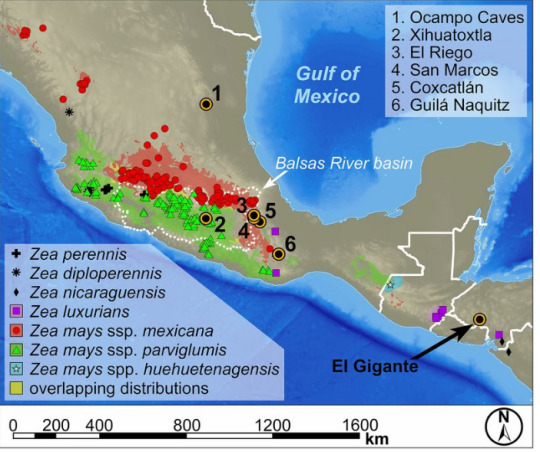
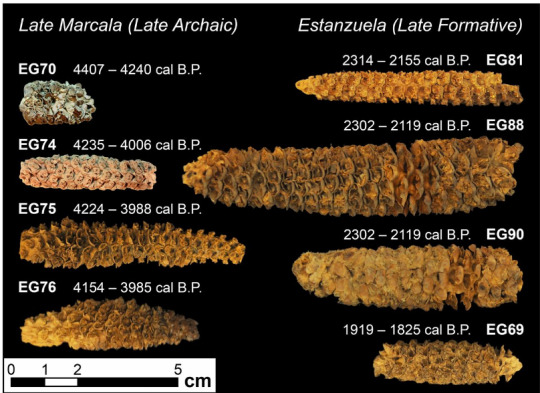

----
A timeline of maize use at different sites extending back at least 9500 years:

------
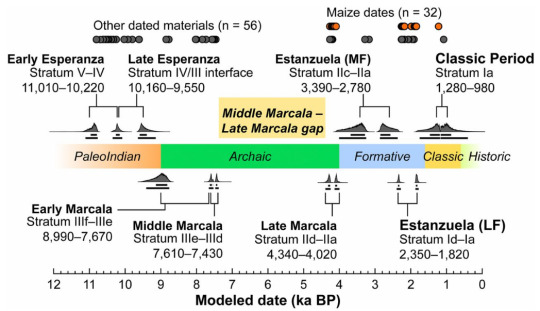
From:
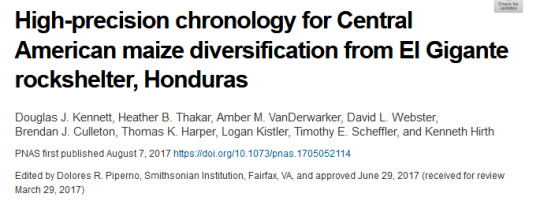
Abstract: The first steps toward maize (Zea mays subspecies mays) domestication occurred in the Balsas region of Mexico by ∼9,000 calendar years B.P. (cal B.P.) [...]. Molecular and microbotanical data provide a partial picture of the timing and nature of morphological change, with genetic data indicating that alleles for some domestication traits were not yet fixed by 5,300 cal B.P. in the highlands of Mexico. Here, we report 88 radiocarbon dates on the botanical remains from El Gigante rockshelter (Honduras) to establish a Bayesian chronology over the past ∼11,000 y spanning the transition to maize-based food production. Botanical remains are remarkably well preserved and include over 10,000 maize macrofossils. We directly dated 37 maize cobs to establish the appearance and local change of maize at the site. Cobs are common in deposits dating between 4,340 and 4,020 cal B.P., and again between 2,350 and 980 cal B.P. [...] Our results indicate that domesticated landraces of maize productive enough to be a staple grain existed in Central America by 4,300 [years before present].
41 notes
·
View notes
Text

I've decided to post another drawing of a pre-Ediacaran weirdo. This is Tawuia, a genus of strange, sausage shaped organisms from the Proterozoic. To my knowledge, the oldest specimens of this genus come from the Chuanlinggou Formation, which dates to roughly 1641 million years ago during the Statherian period, while it's latest appearance is apparently in the Ediacaran.
Despite what some depictions may suggest, Tawuia is generally believed to lack a holdfast (some fossils assigned to Tawuia do preserve evidence of a holdfast, but these contradict the anatomy of most Tawuia and therefore are not included in the genus, and the disks sometimes preserved at the end of specimens are found on both ends, which is impractical for a holdfast). The exact identity of Tawuia is uncertain, but I believe the most widely accepted idea as of now is that they are coenocytic (a kind of cell that contains multiple nuclei) macroalgae. As for size, they apparently reached 2.5 to 18.4 mm in length.
The circular structures seen along the outside of this Tawuia are epibionts (organisms that live on the surface of other organisms) that are preserved in several specimens of both it and the fellow Proterozoic macrofossil Sinosabellidites from North China.
(As a side note; I've also uploaded this reconstruction to Wikipedia, though it has been helpfully edited by a fellow wiki user to get rid of the lines)
Here are some papers on the subject*:
Macroscopic fossils from the Chuanlinggou Formation of North China: evidence for an earlier origin of multicellular algae in the late Palaeoproterozoic (the link doesn't work for this one)
*Unfortunately, all but the middle one of these require you to log in via an organization
#proterozoic#precambrian#tawuia#tonian#statherian#paleoproterozoic#mesoproterozoic#neoproterozoic#paleontology#paleoart#algae
6 notes
·
View notes
Photo

Fossil Chalk Fish Bones Cretaceous Grey Chalk Osteichthyes Sussex UK Genuine Specimen
Fossil Chalk Fish Bones – Osteichthyes
Geological Period: Cretaceous (Late)
Age: Approximately 100 to 66 million years ago
Formation: Grey Chalk Subgroup
Locality: Clyde, Sussex, United Kingdom
This listing presents a fascinating fragment of fossilised fish bones from a bony fish (class Osteichthyes), embedded in the iconic Grey Chalk of southern England. Recovered from Clyde, Sussex, this specimen dates to the Late Cretaceous, a time when much of the UK was submerged beneath a shallow, warm sea.
The Grey Chalk Subgroup is part of the broader Chalk Group, deposited during the Late Cretaceous and composed primarily of coccolith-rich calcareous sediments. These marine chalks frequently yield well-preserved micro- and macrofossils, including the remains of fish, marine reptiles, ammonites, and echinoderms.
Fish remains from this unit, including bones, scales, and teeth, are relatively scarce and often highly fragmented, making well-preserved examples like this a prized find. The bones may include partial vertebrae, fin rays, or cranial fragments — each offering insights into the structure and diversity of ancient marine vertebrates.
Actual Specimen Pictured: You will receive the exact item shown in the photo.
Scale: 1cm cube included for accurate sizing. Please see image.
Condition: Natural preservation in matrix; stable and suitable for display or study.
Ideal for:
Fossil collectors and palaeontology enthusiasts
Educational settings and museum reference
Marine fossil displays
Gifts for natural history lovers
All of our Fossils are 100% Genuine Specimens & come with a Certificate of Authenticity.
Our fossils are responsibly sourced and described with detailed geological and taxonomic accuracy.
#fossil fish bones#chalk fish fossil#Cretaceous fish remains#Grey Chalk Formation#Sussex fossil#Clyde UK fossil#bony fish fossil#Osteichthyes fossil#British fossil fish#authentic chalk fossil#real fish bones#Mesozoic marine fossil#UK fossil vertebrate#fish bone slab#genuine Cretaceous fossil
0 notes
Photo
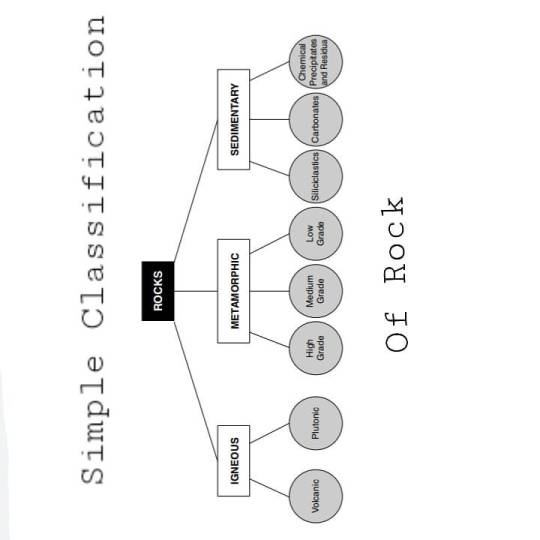
Rock and Forensic Science
👉 A rock may be defined simply as a mass of solid matter that is composed mainly of mineral crystals or grains that are texturally intergrown or held together by some form of cement.
👉 Pieces of rock have several attributes which can potentially be used as a basis for forensic comparison, including size, shape, surface texture (including weathering rinds and coatings), density, color, chemical composition, mineralogical composition, internal textural layering, fabric, magnetic characteristics, fossil assemblage (both macrofossil and microfossil), and age.
👉 Three main rock groups are: 🌑 Igneous, 🌑 Metamorphic, 🌑 and Sedimentary.
Each of which can be sub-divided, are traditionally distinguished.
#forensics#forensicscience#crimescene#forensic#criminology#forensicfield#forensicmcq#forensicquestionandanswer#forensicstudy#forensicinvestigation#evidence#forensicbiology#suspecteddocument#forensicknowledge#forensictoxicology#physicalevidence#questioneddocument#forensicexamination#forensicintro#forensiceducation#netjrf#forensicnetexamination#rock#cementadulterant#rockandforensic
3 notes
·
View notes
Text
Conversations with Pang Ke: Unraveling the Mysteries of Horodyskia And How Ancient Macrofossils Shed Light on Early Eukaryotic Evolution.
The enigmatic Proterozoic macrofossil genus Horodyskia, characterized by strings of bead-like structures, offers vital insights into early eukaryotic evolution. Despite its global distribution and fossil records extending from the early Mesoproterozoic Era (~1.48 Ga) to the terminal Ediacaran Period (~550 Ma), Horodyskia’s biological affinity is debated, with theories ranging from brown alga to…
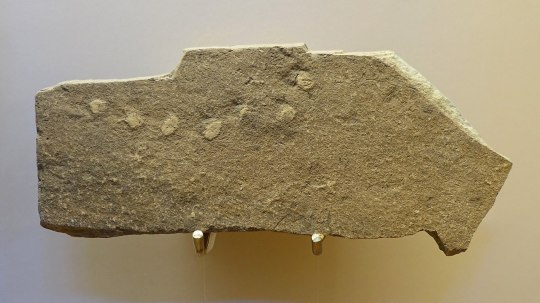
View On WordPress
#Asia#Australia#Conversations#eukaryotes#Europe#evolution#Featured#fossils#North America#South America
0 notes